The Error Initializing QBPOS Application Log is a startup failure in QuickBooks Point of Sale (QBPOS) that prevents the program from loading the log framework used to record transactions, inventory updates, and system events. The error appears when the POS environment cannot access required log files, when the QBPOS Shell structure is damaged, when the Windows framework is corrupted, or when the software version is outdated. The error blocks the POS launch sequence and stops the synchronization pathway between QuickBooks POS and QuickBooks Desktop.
This article explains why the error occurs, how to recognize its technical indicators, and which corrective actions restore the application log framework. The article provides a direct sequence of solutions, including Shell-file reconstruction, permission verification, and POS version updates, followed by additional system adjustments for environments that continue to experience initialization failures.
What exactly is the QBPOS Application Log?
The QBPOS Application Log is a system file that records the operational activity of QuickBooks Point of Sale, including transaction entries, inventory adjustments, and internal program events. The log maintains an ordered data structure that supports accurate tracking and stable POS performance. The POS system relies on this log during startup and during data exchange with QuickBooks Desktop because it provides the reference framework that verifies system components and documents the information moving through the synchronization channel.
The program reads this log at the beginning of the startup sequence to confirm that required components are intact before loading the interface. When the log structure becomes inaccessible or corrupted, the POS startup process fails, and the following error prompt appears on the screen, which prevents QuickBooks Point of Sale from opening.

Primary Factors behind the Error Initializing QB pos Application Log
QuickBooks POS fails to initialize the application log because core program files are damaged, the QBPOS Shell folder is corrupted, or the Windows framework required for POS operations is compromised. The error occurs due to restricted administrative permissions, an outdated POS version, and missing or misconfigured installation components. Security software, firewall rules, background applications, and User Account Control (UAC) settings can also block the log from loading. These conditions disrupt the startup sequence and prevent QuickBooks POS from opening.
Several conditions lead to the QuickBooks Point of Sale application log initialization error. The most common causes are listed below:
- The QBPOS Shell folder is damaged or corrupted, which disrupts the program’s startup structure.
- The Windows framework required for POS operations is corrupted or incomplete.
- The user is not logged in with administrator privileges, which blocks access to required system resources.
- The QuickBooks POS version is outdated and not aligned with the operating system or supporting components.
- The POS installation contains missing, altered, or misconfigured files due to an improper or incomplete setup.
- Security software, including firewalls and antivirus tools, blocks the log file or prevents POS services from running.
- Background applications interfere with the POS startup sequence or lock essential files.
- User Account Control (UAC) settings restrict the permissions needed for the application log to load.
How to Recognize the Effect of Error Initializing QBPOS Application Log?
The Error Initializing QBPOS Application Log produces several operational indicators that reflect the program’s inability to load the application log structure during startup. These indicators identify the initialization failure and show how it affects the POS environment. Most common indicators are listed below:
- The error prompt appears during the POS startup sequence.
- QuickBooks Point of Sale does not open after the initialization attempt.
- Payment processing, return processing, or sales entry functions stop responding when the POS version fails to load required log components.
- The system displays slow or delayed responses as the POS attempts to access damaged or unavailable program files.
- Windows or QuickBooks POS freezes or closes unexpectedly during startup due to corrupted framework components.
Customized Solution for Error Initializing QBPOS Application Log
- To rectify the Error Initializing Qbpos Application Log, ensure that you have a stable internet connection, or else you won’t be able to open QB Point of Sale in your system.
- After this, check the compatibility between your Windows version and the QuickBooks Point of Sale program. If any of them need to be updated, do it as soon as possible; otherwise, the old Windows version prevents you from opening QuickBooks POS in your system.
- Now, you need to create a new user account or give permission to access your login credentials if you’re not added as a Windows admin or you don’t have administrative privileges.
- Once you’re logged in successfully, don’t forget to update your software to the latest version.
- If the error continues to bother you, go through the solutions we have discussed below.
Best Troubleshooting Methods to Fix Initializing QBPOS Application Log Error
The Error Initializing QBPOS Application Log requires a clear troubleshooting process because the issue results from damaged files, restricted permissions, or corrupted system components. The methods in this section repair affected program files, restore administrative access, and update the POS environment to meet system requirements. Each method targets a specific cause of the initialization failure to ensure a complete and successful POS startup.
Here’s a list of some precautionary steps that must be followed carefully before moving forward with the solution part:
Solution 1: Process of Removing Duplicate QBPOS Shell Files
1. Check for Conflicts
Make sure that QBPOSShell.exe does not conflict with other third-party programs installed on your computer keyboard. Also, make sure the right folder is chosen before deleting the QBPOSShell task.
2. Backup QBPOSShell File
It is important to create a backup copy of the QBPOSShell.exe file before renaming the folder that contains it.
3. Log in as Administrator
Enter the right administrator username and password. If necessary, take notes on them to use later when you wish to remind yourself of these things.
4. Proper Installation and Updates
Make sure that the QuickBooks POS and other related software are well-installed and updated on your system.
5. Avoid Excel Data Errors
When updating data via Excel:
- Detach unused columns and clear empty rows/columns.
- Do not use dashes, formulas, hyperlinks, or special symbols (for example, @, #, $, %, &,*, etc.).
- Clear Contents should be used in comparison to manual deletion of information.
Solution 2:
Once done with following all the precautionary steps, now it’s time to fix QuickBooks Error 6000 301 if it continues to bother you. So, let’s adhere to the steps presented below:
Step 1: End QBPOSShell Task
- Open the Task Manager by clicking Ctrl + Alt + Del Keys together, then select the Processes Tab.
- Select the Task named QBPOS Shell, and choose to end the task
- Go to the search bar and open the Windows browser

Step 2: Show hidden folders

- Make sure Windows is displaying Hidden Files and Folders:
- Open Windows File Manager (File Explorer).
- Click on Organize in the top right corner and select Folder and Search Options.
- Choose the View tab and click the radio button beside Show Hidden Files, Folders, and Drives.
- Click Apply and then press OK.
- Locate the QBPOS Shell File:
- Go to C:\Users\[User Name]\AppData\Local.
- Click on the Intuit® folder that appears.
- Find the file named QBPOS Shell with the .exe extension.
- Rename the Config File:
- Search for the config file, right-click on it, and select Rename.
- Rename it to configold.
- Restart the PC:
- Close all opened windows and restart your computer.
- Check if the Issue is Resolved:
Open QBPOS to check if the “Error Initializing QBPOS Application Log” issue is fixed.
For Windows 7 only
- Click on the Windows icon at the left corner of your screen and then open the Control panel.
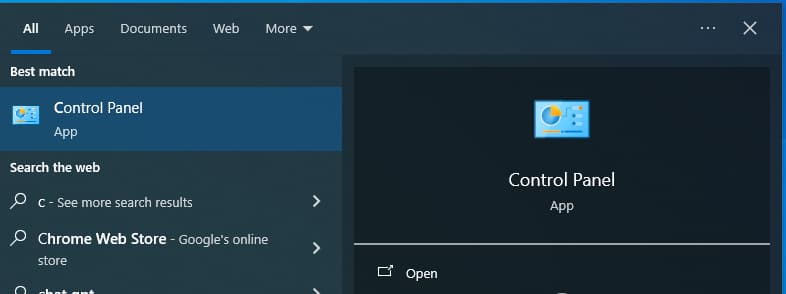
- Navigate to the Folder options and hit the View tab.
- After this, select the Show hidden files, folders, and drives under the Advanced settings.

- Press Apply and then choose OK.
- Go to the C:\Users\User name\Appdata\local\intuit\QBPOSshell.exe.
- Now, hit right-click on the User.config and select the Rename option.
- Change the name of it to User.config.old.
- In the end, close all the Windows and reopen QuickBooks Point of Sale for desktop.
Method 2: Create a New Windows admin
For Windows 11
Create a local user account
- Firstly, go to the Start menu and click on Settings.
- Now, select Accounts and then choose Family & other users. (In some Windows versions, you’ll see Other users.)
- Click on Add account next to Add other user.
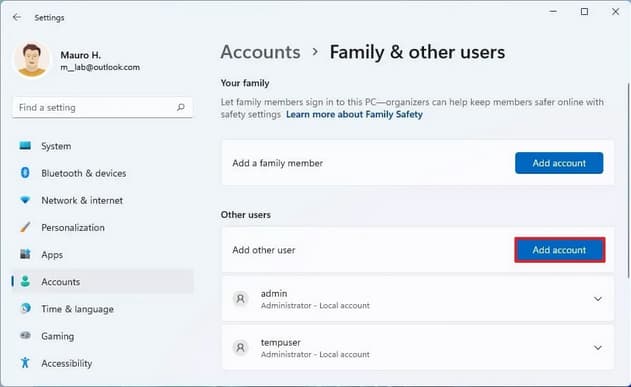
- Select the option I don’t have this person’s sign-in information.
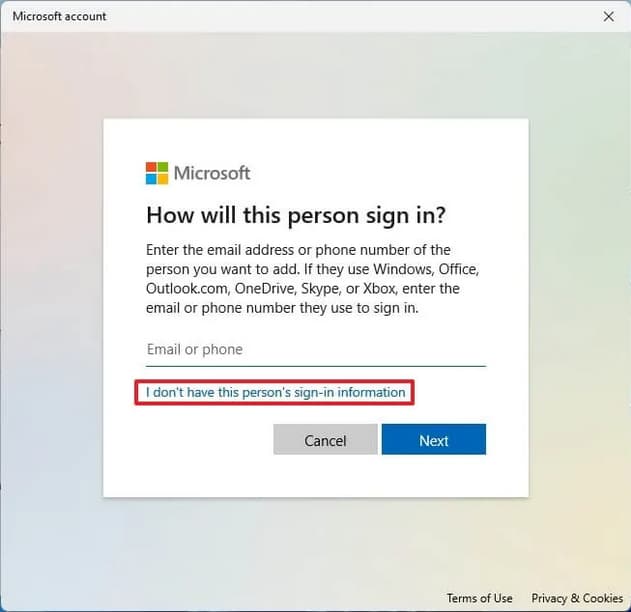
- Then, press Add a user without a Microsoft account on the next page.

- After this, type a user name, password, or password hint—or choose security questions—and then hit the Next tab.
Change a local user account to an administrator account
- Click the Start menu then select Settings and Accounts.
- Next, choose the account owner name under Family & other users (you will see “Local account” below the name), then select Change account type.
Note: If you click on an account that shows you an email address or doesn’t say “Local account”, then you’re giving administrator permissions to a Microsoft account, not a local account.
- After this, select Administrator under Account type and then press the OK button.
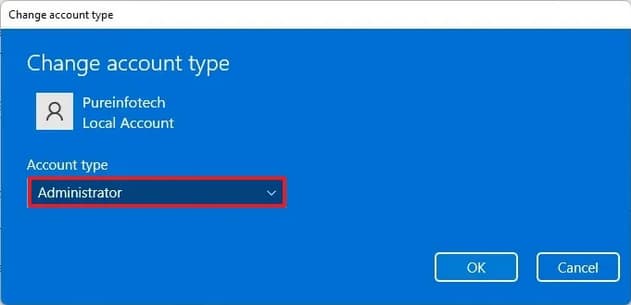
- When everything is OK, sign in using a new administrator account.
For Windows 10
Create a local user account
- Head to the Windows Start menu and then hit the Settings icon.
- Now, choose Accounts, then Family & Other Users (in some Windows versions, you’ll see other users).

- After this, click on Add someone else to this PC.
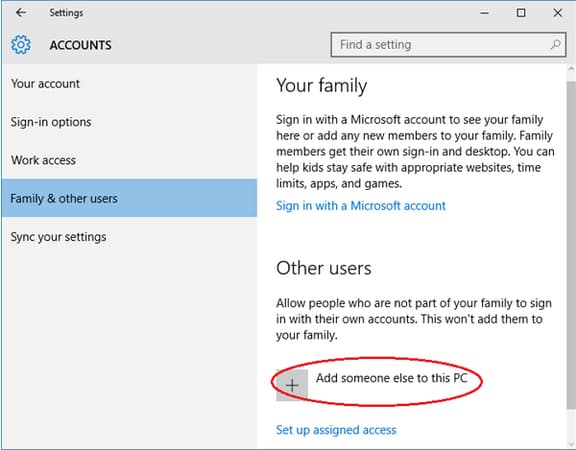
- Select the option I don’t have this person’s sign-in information.
- Choose the option Add a user without a Microsoft account on the next page.
- At last, enter a username and password and then press the Next button.
Change the local user account to an admin account
- Head to the Windows Start menu and click on Settings.
- Then, select Accounts and choose the account owner name under Family & Other Users.
- Choose the username you created before and then hit the Change account type icon.
- After this, click Administrator under Account type, then press OK.
- To finish, log in as admin.
- Once done, try to open QuickBooks Desktop Point of Sale.
For Windows 8.1
Create a Microsoft account
- Swipe in from the right corner of the screen, click Settings, and then select Change PC settings.
Note: If you’re using a mouse, go to the lower-right corner of the screen, move the mouse pointer up, hit the Settings tab, and then choose Change PC settings.
- Now, choose Accounts, and then click Other Accounts.
- Select the Add an Account option.
- After this, enter the account info for this person to sign in to Windows. There are four methods to do this:
- If the person you’re adding already has a Microsoft account, you can enter it now.
- However, if the person you add doesn’t have a Microsoft account, use their email address to create one. Also, write down the email address that the person uses frequently.
- If the person you’re going to add doesn’t have an email address, hit Sign up for a new email address. It’s completely free.
- Follow all the on-screen instructions to set up the account.
Create a local account
- Firstly, swipe up from the right corner of the screen and click Settings, then select the option Change PC settings.
Note: If you’re using a mouse, point to the lower-right edge of the screen, move the mouse pointer up, hit the Settings tab, and then choose Change PC settings.
- Now, click Accounts, and then select Other Accounts.
- Choose Add an account, then hit Sign in without a Microsoft account (not recommended).
- After this, click the Local Account icon.
- Type a user name for the new account.
- If you want this person to log in using a password, enter and verify the password, add a password hint, and later press Next. You might be able to skip this step depending on the domain’s security settings if your PC is on a domain and click Next, if you prefer.
- Hit the Finish icon at the end.
For Windows 7
My computer is on a domain
- Press the Start button to open Microsoft Management Console, type mmc into the search box, and then hit the Enter key.

Note: Enter the Administrator password if you’re prompted for an administrator password or confirmation.
- Now, select the Local Users and Groups option from the left pane of Microsoft Management Console.
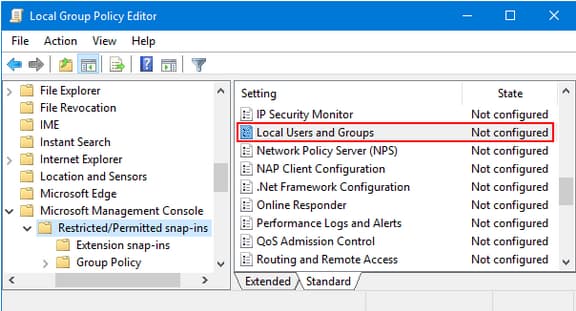
Note: If you are unable to see Local Users and Groups, it’s probably because that snap-in is not added to the Microsoft Management Console. Adhere to the following steps to install it:
- Under Microsoft Management Console, hit the File menu, and then choose Add/Remove Snap-in.
- Next, select Local Users and Groups, and then press Add.
- Click Local computer and hit the Finish and OK tab.
- Choose the Users folder option.
- Press Action, and then hit the New User icon.
- After this, enter the appropriate information in the dialog box, and then press Create.
- Once you are finished creating user accounts, click the Close tab.
My computer is in a workgroup
- To open User Accounts, hit the Start button and open the Control Panel.
- Now, select User Accounts and Family Safety, and then click User Accounts.
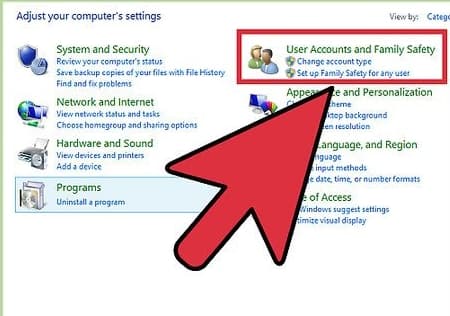
- Choose the Manage Another Account option.
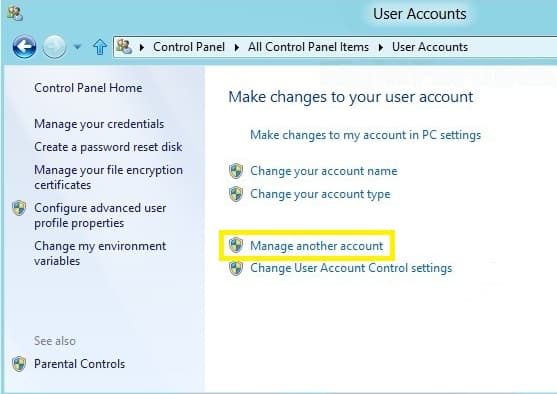
Note: Administrator permission is required If you’re prompted for an administrator password or confirmation.
- After this, choose to Create a new account.
- Enter the name you’d like to give the user account, select the Account type, and click Create Account.
Method 3: Create A New User Account with Administrative Rights
For Windows 10, 8, 8.1
- Navigate to the lower-left corner of your desktop screen and then press the Start button.
- After this, open the Control Panel.
- Hover over User Accounts and Family Safety and then select User Accounts.
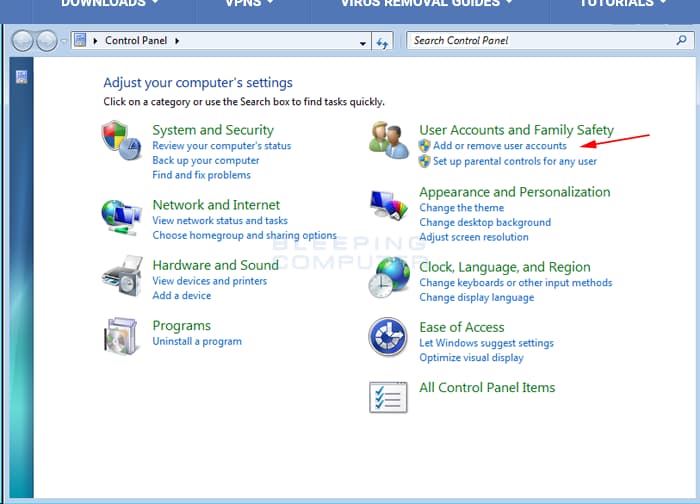
- Now, choose the option Add a New User under the Manage Accounts.

- Hit Add a user and then click on the Sign in without a Microsoft Account link.
- Once done, select Local Account, then type a username and leave the password field blank.
- Press the Next button and click Finish.
- Restart your system and try signing in using new login credentials.
- When everything is OK, reopen QuickBooks Point of Sale.
For Windows 7 Users
- Go to the Windows Microsoft Start menu and then click the Control Panel.
- Now, choose the User Accounts option.
- After this, click on Manage Another Account and then select Create a New Account.
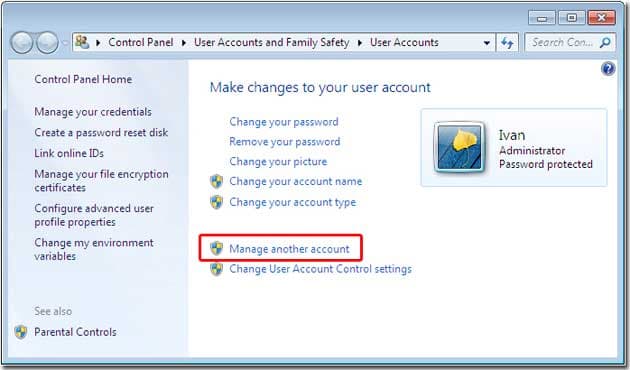
- Once done, give the new account a unique name and hit the Administrator tab.
- Select Create a new Account.
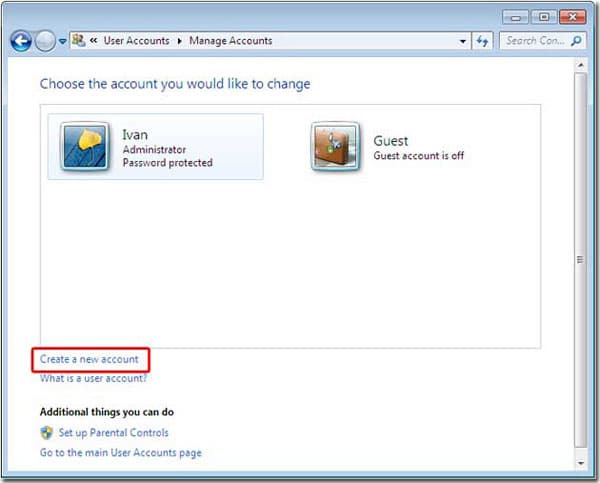
- Lastly, restart your system and log in with a new administrator account, then open QuickBooks POS again.
For Windows XP
- Hit the Windows Start button and hold down the Win + R keys to open the Run command.
- Search and locate the Control Panel in the text field and then press OK.
- Now, click twice on the User Accounts.
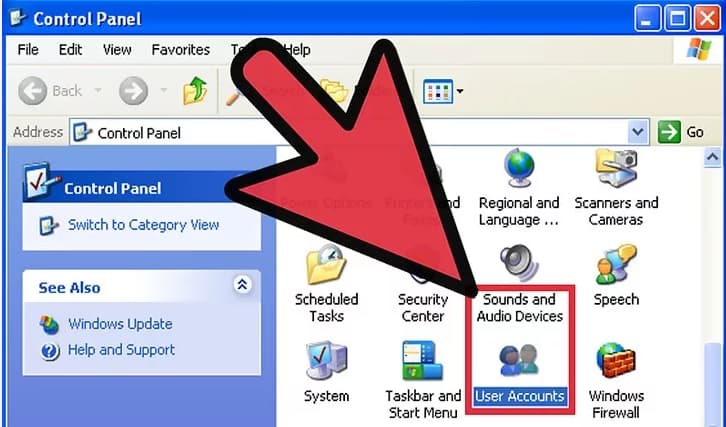
- Select the option Create a New account and then follow the on-screen prompts to make a new user account with administrative rights.

- When you’re ready, restart your computer and re-login using new details.
- After this, run QuickBooks Point of Sale and check for the error status.
Method 4: Update QuickBooks to the Latest Version
Step 1: Enable Automatic Updates
- QuickBooks will notify you about available updates via email, in-product notifications, and the product page.
- If you choose automatic updates, QuickBooks will automatically download updates when available.
Step 2: Install Automatic Updates
- Once the update is downloaded, you’ll see the update notification in the status bar (top right corner).
- The update will install automatically when you close QuickBooks and leave your system/PC on.
Step 3: Manual Update Option
- If you prefer to update manually, follow the manual instructions provided by QuickBooks instead of enabling automatic updates.
Conclusion!
The Error Initializing QBPOS Application Log interrupts the startup sequence of QuickBooks Point of Sale because the program cannot access the log structure required for system verification and data tracking. The troubleshooting methods in this guide resolve the core issues by repairing damaged components, restoring administrative permissions, and aligning the POS environment with the required system configuration.
These steps ensure correct application log loading and maintain operational stability within QuickBooks Point of Sale. Additional diagnostic checks or system adjustments can be performed if the POS environment continues to experience initialization failures.
Frequently Asked Questions
What exactly is the QBPOS Shell folder, and why is renaming its file a common fix?
The QBPOS Shell folder, located in the ./AppData/Local/Intuit path, contains the configuration settings (.config file) that QuickBooks POS uses every time it starts up. When this configuration file becomes corrupted—often due to a crash or improper shutdown—it prevents the POS application from initializing correctly. Renaming the .config file (e.g., to .config.old) forces QBPOS to automatically generate a fresh, uncorrupted shell configuration file on its next launch, which often resolves initialization failures.
Can antivirus or security software cause the Application Log initialization error?
Yes, absolutely. Security software, especially programs with aggressive real-time scanning, can sometimes mistakenly flag or block access to critical QBPOS files, including the Application Log or the QBPOSShell.exe file, during startup. This restriction prevents the program from accessing the necessary log framework, resulting in the initialization error. To prevent this, you must explicitly add the QBPOS installation folder and its executable files as exceptions to your antivirus and firewall settings.
What is the difference between the Application Log and the qbpos.log file in QuickBooks POS?
The Application Log is a general term referring to the framework that records system startup and operational events, which is what the initialization error is about. The qbpos.log file is the actual, specific text file stored on your system that contains the detailed, chronological records of all POS activities, including transactions, system events, and specific error codes. When the application fails to initialize the framework (the error you are troubleshooting), it cannot write to the .qbpos.log file
If renaming the shell configuration file does not fix the initialization error, the next most common file issue is a damaged or missing program component due to an incomplete or corrupted installation. The recommended step is typically to perform a clean reinstall of the QuickBooks POS software. This process involves using the QuickBooks Tool Hub or similar official utility to thoroughly remove all program traces, then reinstalling the latest version from scratch to ensure all necessary files and the application log framework are correctly restored.
Can restoring the backup help rectify the QuickBooks POS Shell Folder has Stopped Working Error?
Yes, you can rectify the QBPOS Shell Folder has stopped working error by restoring the backup.
The restoration steps are as follows:
Select the File option in QuickBooks.
Choose Open or Restore from the drop-down menu.
Select Restore a Backup Copy and click Next.
Choose the Local Backup option to restore the data file and hit Next.
Find the backup file, select the folder where you want to save it.
Click Open, then Save to complete the process.
Can a damaged installation cause the “Error Initializing QBPOS Application Log” error?
Yes, a damaged or incomplete installation of QuickBooks POS can lead to errors, including issues with initializing the application log. Reinstalling the software often helps resolve installation-related problems by repairing corrupted files and setting up the system correctly.
Does the QBPOS Application Log error affect my data?
The Error Initializing QBPOS Application Log affects the startup sequence but does not alter stored POS data. The failure occurs before data files load, so the issue is connected to initialization components rather than sales or inventory records.
Does an outdated version of QuickBooks POS contribute to the Application Log error?
Yes, maintaining an outdated version of QuickBooks POS can lead to initialization errors. Older versions may not be compatible with the latest Windows operating system updates or security changes (like stricter UAC controls or new Windows Defender rules). This incompatibility can disrupt the POS startup sequence, leading to failures when the program attempts to initialize its log framework under the new OS environment. Keeping QBPOS updated ensures maximum compatibility and stability.
If I fix the Application Log error, will my historical data (sales, inventory, transactions) remain intact?
Usually yes — provided you do not delete or overwrite your company data files during repair. Because the “Application Log” refers to POS system and configuration logs (not the company data file where sales/inventory are stored), rebuilding or repairing the POS shell/config should not affect your main data.
However:
➜If you perform a clean install (uninstall + rename POS folders + reinstall) and then restore data, ensure you restore from a verified backup. Poor backups or incomplete restores can risk data loss.
➜Given that POS is discontinued, there is no guarantee for future compatibility, so you must keep regular, external backups of your company file and related data.
Disclaimer: The information outlined above for “How To Fix Error Initializing QBPOS Application Log: Best Solutions” is applicable to all supported versions, including QuickBooks Desktop Pro, Premier, Accountant, and Enterprise. It is designed to work with operating systems such as Windows 7, 10, and 11, as well as macOS.
